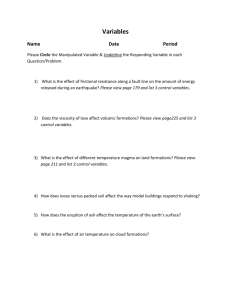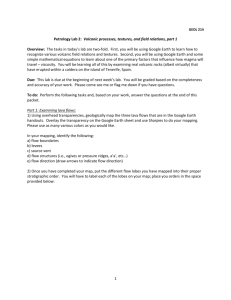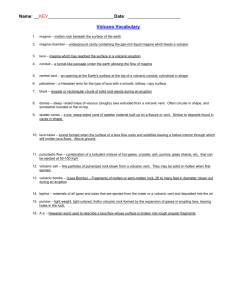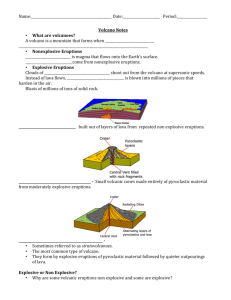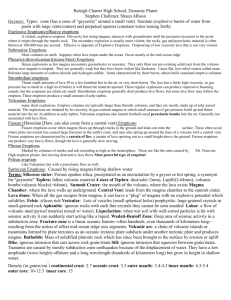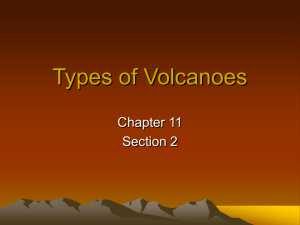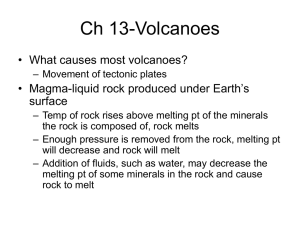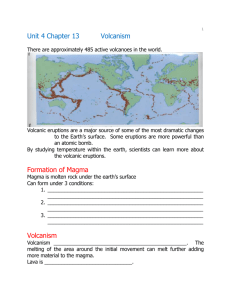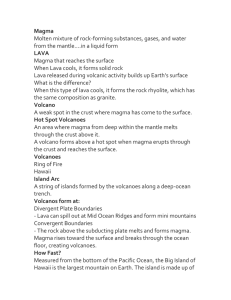Volcanic Eruptions
advertisement
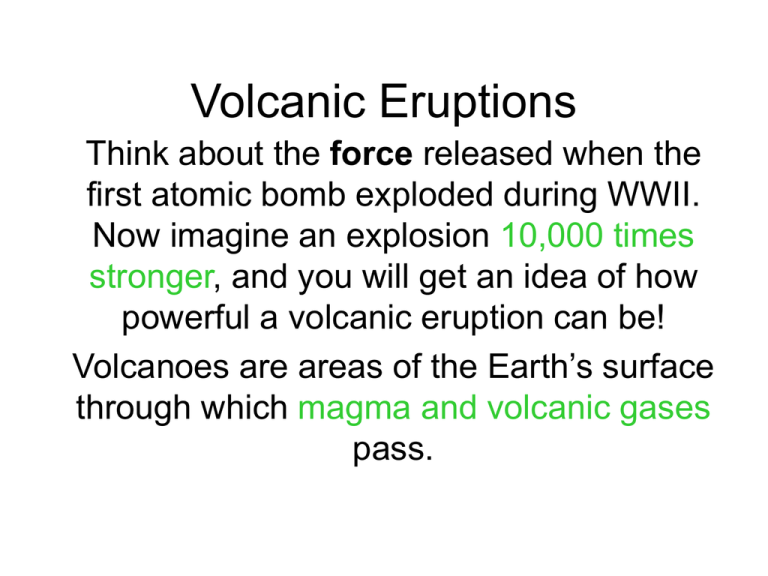
Volcanic Eruptions Think about the force released when the first atomic bomb exploded during WWII. Now imagine an explosion 10,000 times stronger, and you will get an idea of how powerful a volcanic eruption can be! Volcanoes are areas of the Earth’s surface through which magma and volcanic gases pass. Volcanoes erupt both explosively and non-explosively Non-explosive eruptions are most common: • Calm flows of lava • Can release huge amounts of lava • Much of the sea floor and NW region of the US are covered with lava from nonexplosive eruptions. Volcanoes erupt both explosively and non-explosively Explosive eruptions are much rarer: • Can be incredibly destructive • Clouds of hot debris, ash, and gas rapidly shoot out of the volcano • Ash-molten rock blown into tiny particles that harden in the air (may circle in the atmosphere for years • Larger pieces of debris fall closer to the volcano • Can demolish a mountainside in seconds Magma that has a high level of water, CO2, or silica tends to erupt explosively The composition of magma affects how explosive a volcanic eruption is: • The higher the water content, the more explosive the eruption • Lava releases pressure (CO2- as it moves to the surface-just like shaking up a soda can) • Silica rich magma is very stiff and hardens easily plugging vents, results in explosive eruptions when the pressure builds up Lava can be classified by its viscosity and by the surface texture of lava flows • Lava is liquid magma that flows from a volcanic vent, its viscosity can vary (thick, like a milkshake or thin, like milk) • High viscosity=stiff; low viscosity=fluid • Blocky lava and pahoehoe (puh HOY hoy) have high viscosity and flow slowly • Aa (Ah Ah) and pillow lava have low viscosity and flow quickly Pyroclastic material, such as ash and volcanic bombs, forms when magma solidifies as it travels through the air Pyroclastic material forms when magma is blasted into the air and hardens or when powerful eruptions shatter existing rock. • Size can vary from tiny particles suspended in the atmosphere to boulders the size of houses • Volcanic bombs -large blobs of magma that harden in the air • Lapilli (little stones)-pebble size pieces of magma that harden before they hit the ground • Volcanic blocks -largest, solid pieces erupted from a volcano • Volcanic ash -tiny, glass-like slivers of hardened magma

